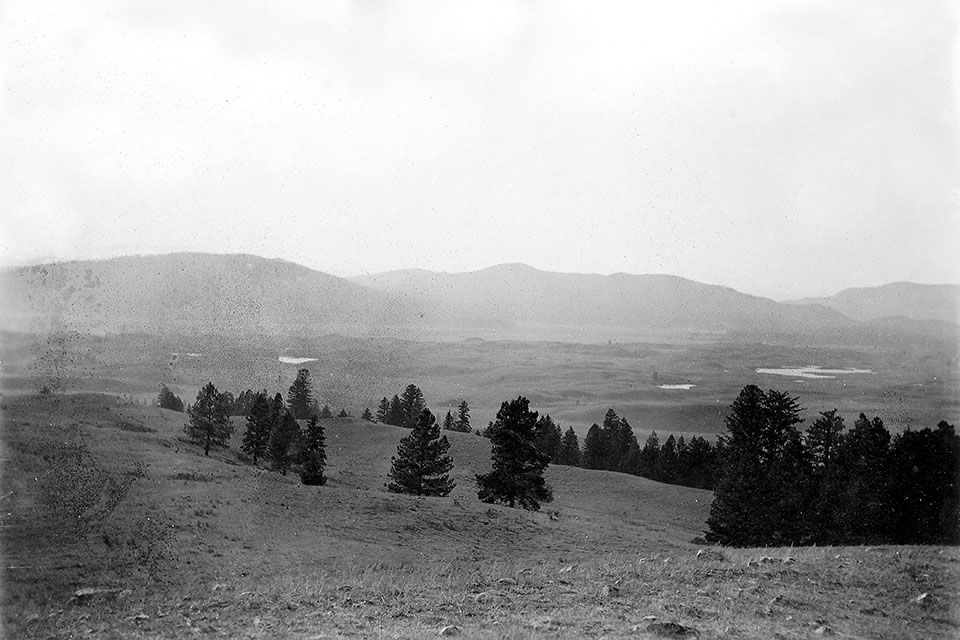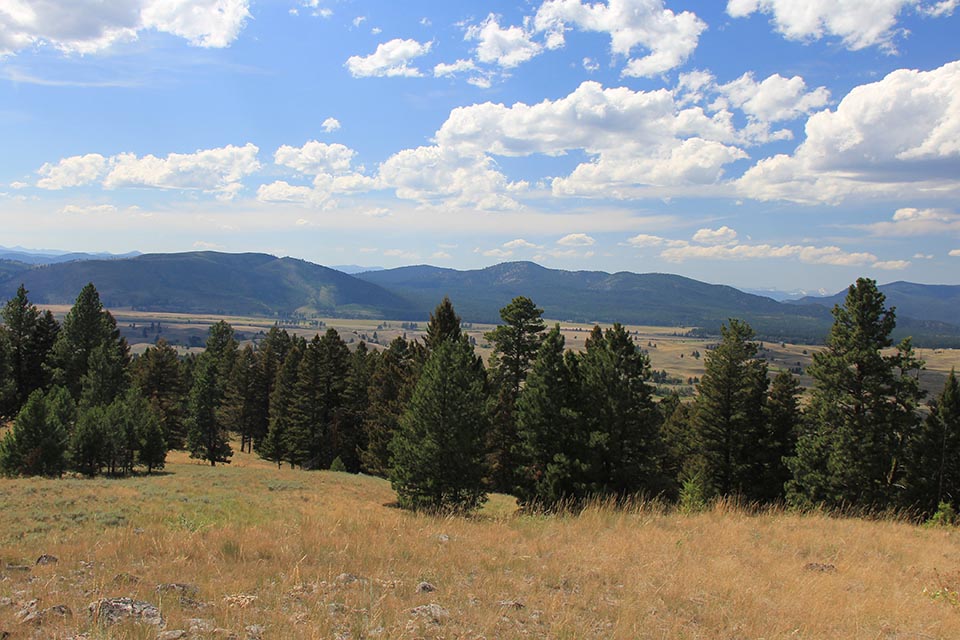The Blackfoot River, entering the Clark Fork just east of Missoula, Montana provided a rapid route for western tribes to cross the continental divide to reach herds of bison along the Missouri River. The Hidatsa, and later the Nez Perce people gave details of the route to Lewis and Clark, and the part of the expedition led by Captain Lewis used this trail on the return trip eastward over the mountains. For July 6, 1806 Lewis described their trip up the Blackfoot River across the grasslands visible in the repeat images:
Set out a little after sunrise, passed the creek a little above our encampment, east 14 miles to the point at which the river leaves the extensive plains and enters the mountains, these plains I called the prairie of the knobs from a number of knobs being irregularly scattered through it, passed the N. fork of the Cokahlarishkit (Blackfoot) River at 7 M… it is 45 yds. wide deep and rapid, had some difficulty in passing it, passed a large crooked pond (possibly today’s Kleinschmidt Lake or Browns Lake) at 4 ms. further, great Number of the burrowing squirrels in this prairie of the species common to the plains of Columbia, saw some goats a deer, the hunter killed one of the latter, the trail which we take to be a returning war-party of the Minnetares of Fort de prarie (possibly Piegans) becomes much fresher, they have a large pasel of horses. 1
For researchers of bison’s historical geography, these upper reaches and grasslands lower along the Blackfoot River are of great interest. Captain Lewis recorded that bison did occur on the headwaters of westward flowing stream (now called Alice Creek) near the pass: “… saw some bison sign of buffaloe early this morning (July 8) in the valley where we encamped last evening from which it appears that the buffalo do sometimes penetrate these mountains a few miles.” Although at that time, it was only 30 km on a good trail, largely through meadows to expansive grasslands around Montour Hill, this area has no evidence of historical bison use. Beyond the observation quoted above, Lewis and Clark found no bison further west of the continental divide. Field surveys have, to date, found no bison wallows in habitats that should have occupied if bison were in the area. 2 Possibly the routine use of the valley by peoples from the west, expressly there to hunt bison, removed any of the animals before they could colonize the large areas of excellent habitat visible in the historic photograph.
Footnotes and Map

